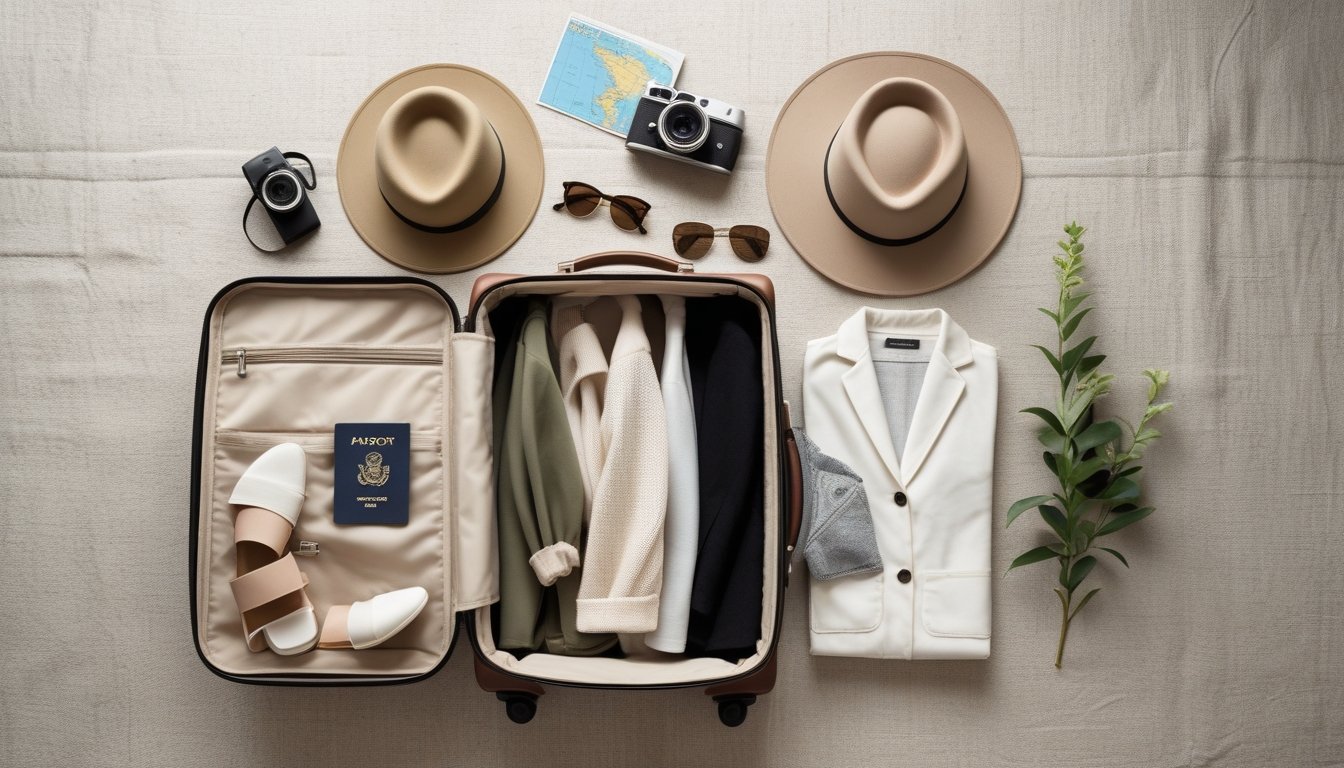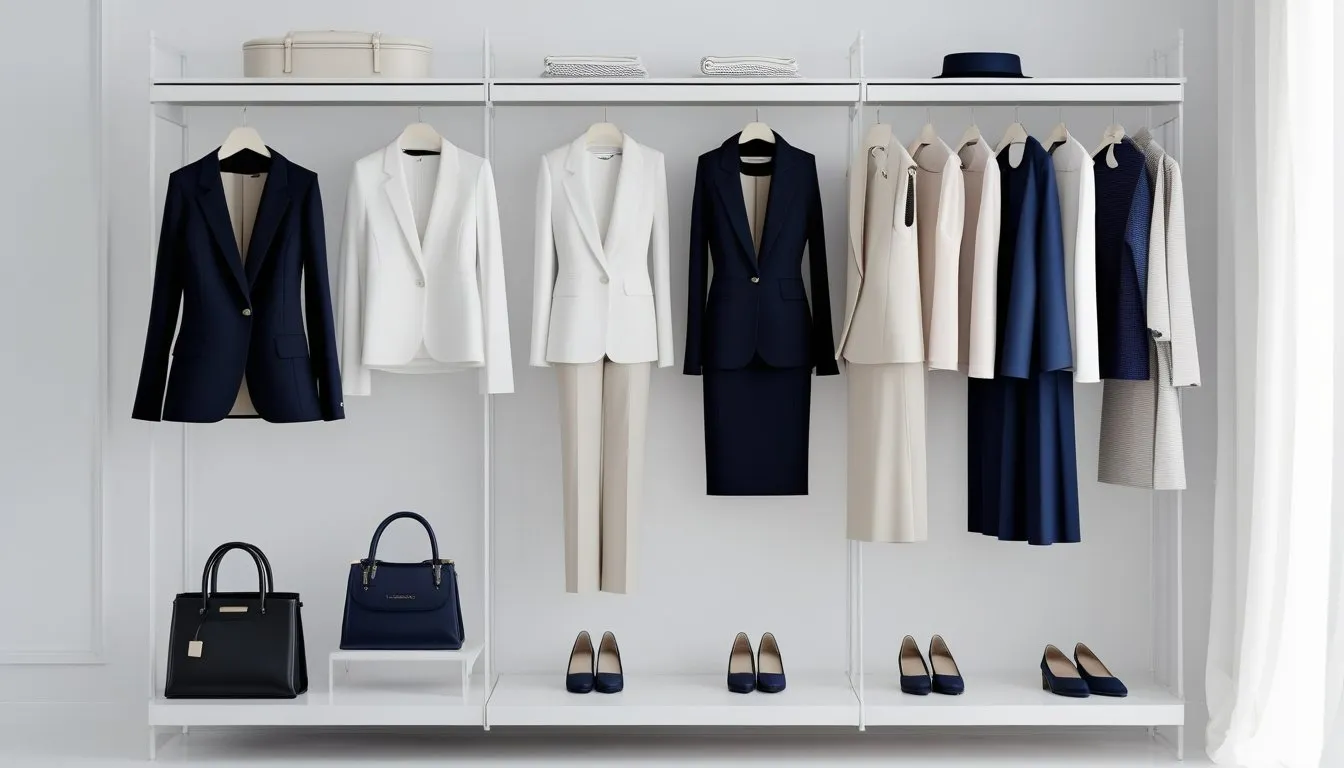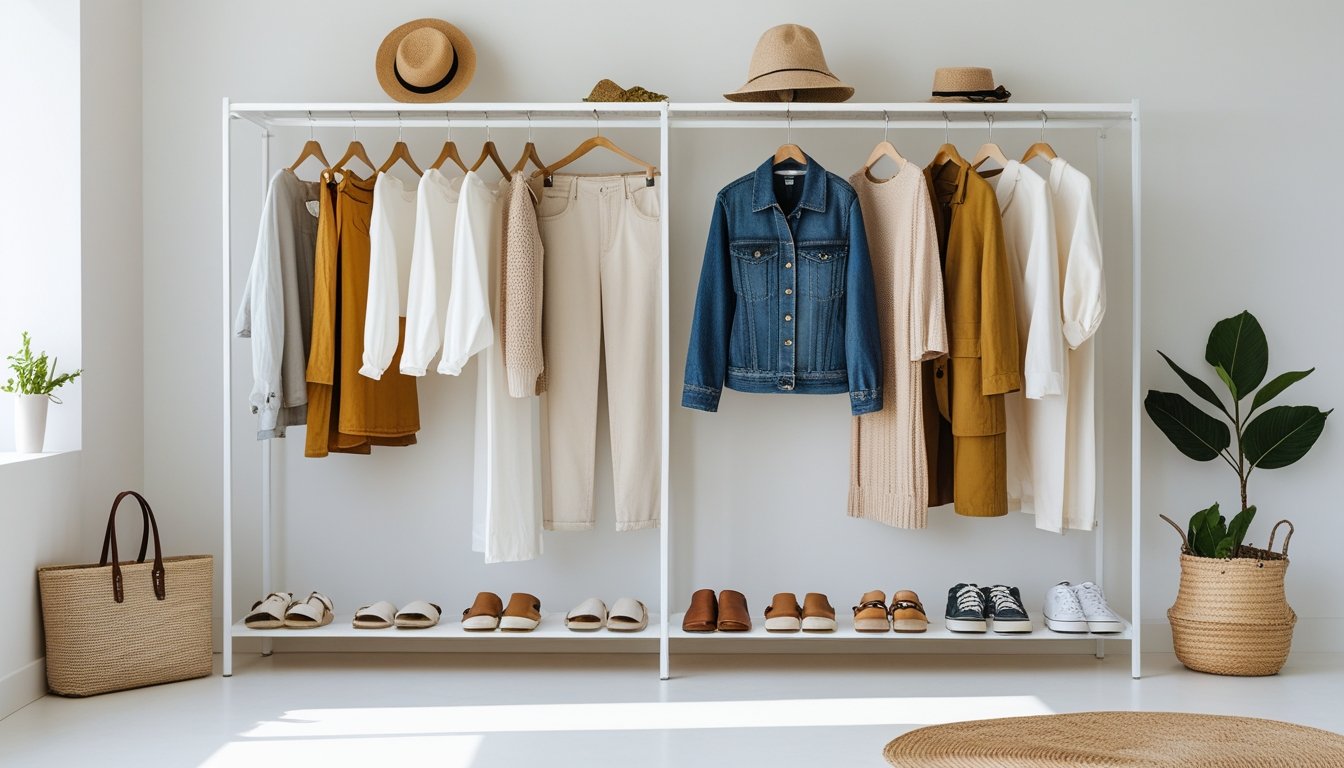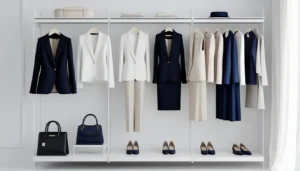If you’re a petite woman, you probably already know how difficult shopping can be. If we talk about Pants that are too long, sleeves that cover your hands, dresses that don’t sit where they should — it often feels like most clothes are designed for those who are taller in mind. And today’s fashion is trending, changing on a daily basis. And it’s easy to end up with a closet full of clothes that don’t quite fit, don’t get worn, and don’t make you feel your best.
This is where a minimalist wardrobe can do the magic. Instead of collecting dozens of pieces that never really work, a minimalist approach focuses on carefully choosing a smaller collection of clothing that actually fits your frame, works with your style, and can be mixed and matched into many outfits. The goal isn’t to restrict yourself — it’s to give yourself freedom. Freedom from wasted shopping trips, from cluttered closets, and from the stress of getting dressed each morning.
For petite women, a capsule wardrobe is especially powerful because it allows you to highlight what works best for your proportions while avoiding the common fit problems that come with off-the-rack clothing. By selecting timeless pieces, sticking to shapes that flatter your frame, and investing in quality over quantity, you can create a wardrobe that feels consistent, stylish, and easy to manage.
In this step-by-step guide, we’ll walk through how to build a minimalist wardrobe specifically designed for petite women. From choosing versatile basics and discovering the best cuts for your body to learning how to make a few pieces stretch across many looks, you’ll find practical, helpful advice to simplify your style and make your wardrobe work smarter for you.
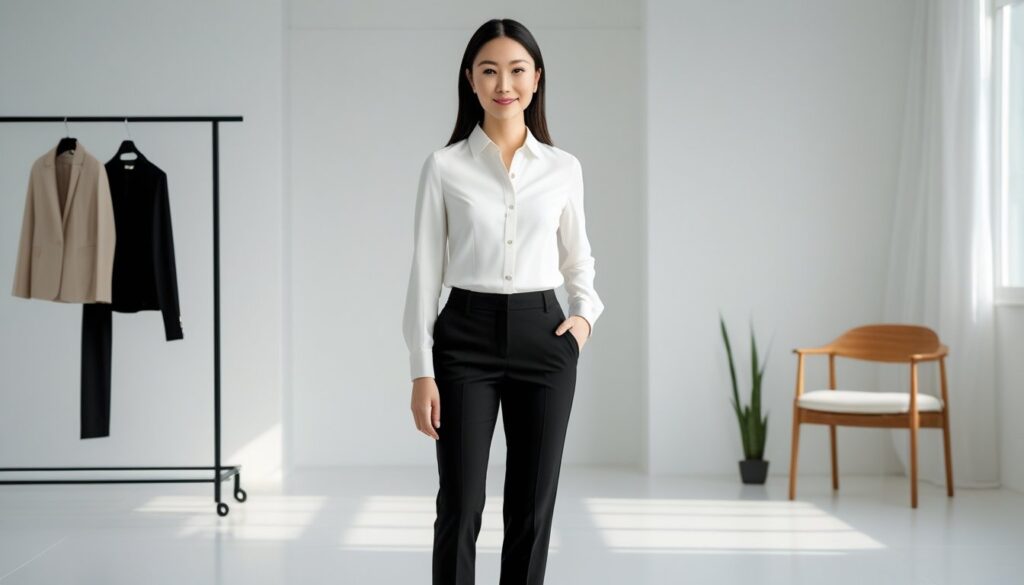
Why Petite Women Benefit the Most from a Minimalist Wardrobe
One of the biggest struggles for petite women is finding clothes that fit and flatter. Since many fashion brands design with taller women in mind, it’s common to feel hidden under too much fabric or lost in styles that don’t match your proportions. That’s where a minimalist wardrobe makes a big difference. For petite women, minimalism isn’t just a trend — it’s a smart way to feel confident and stylish every single day.
Minimalism focuses on proportion, balance, and intention. Instead of filling your closet with random pieces that “almost” work, you create a smaller collection where every item has a purpose. This means your clothes fit well, make you look taller, and highlight your natural shape. You avoid clutter and end up with outfits that always feel right.
I will quote an example of my friend Sarah. She’s 5’1” and used to feel frustrated every morning. Her closet was packed, but nothing worked well together. Pants dragged on the floor, oversized tops swallowed her frame, and trendy jackets looked bulky. After learning about minimalism, she decided to keep only the pieces that truly suited her. She bought a few fitted trousers, neutral tops, and a cropped blazer that instantly gave her a polished look. Now, she doesn’t waste time stressing over outfits — she opens her closet and quickly picks clothes that fit and match. She says her wardrobe finally feels like it’s working for her, not against her.
Another benefit of minimalism is harmony. When your clothes are carefully chosen, everything pairs easily. Tops match bottoms, layers look neat, and accessories add balance without being overwhelming. You don’t have to chase endless trends — instead, you focus on cuts and colors that make you shine.
For petite women, a minimalist wardrobe means less stress, more confidence, and a personal style that feels effortless.

2. Declutter First: What to Keep and What to Let Go
Before you create a minimalist wardrobe that really works and fits well, you need to start with a clean slate. That means decluttering your closet and being honest about what deserves to stay and what needs to go. Most of the women don’t easily let go of their accessories. For petite women, this step is especially important because so many clothes may not be easily adjustable for your proportions. Keeping pieces that don’t fit well only adds frustration and wastes valuable space and time
What to let go:
- Clothes that overwhelm your frame, like oversized sweaters or wide-leg pants that drown your shape.
- Items you constantly “adjust,” such as long sleeves you roll up every day or pants that drag on the floor.
- Trendy pieces that looked fun in the store but never look good on you.
- Duplicates of the same style that you don’t actually wear often.
What to keep:
- Well-fitting basics that make you feel confident — think slim-cut jeans, tailored trousers, or fitted blouses.
- Pieces that don’t go out of fashion too early in neutral shades that can mix and match effortlessly.
- Items that can be styled in multiple ways, like a classic blazer that works with jeans or dresses.
- Clothes that highlight your best features — maybe it’s a cropped jacket that makes your legs look longer or a dress with a defined waistline.
Our goal isn’t to create an empty closet — it’s to create a wardrobe full of clothes that serve you well and fit you well. By removing the “filler pieces” that don’t work for your frame, you’re left with space to build a collection that truly fits your lifestyle and style goals. Once you’ve decluttered, you’ll see your wardrobe with fresh eyes, and building a minimalist capsule will feel much easier.

3. Choosing the Right Colors and Fabrics Patterns for a Petite Frame
The right color and different patterns of different dresses make you look thin, fat, or taller.
When you’re petite, the right colors and fabrics can make a big difference in how your outfits look and feel.
Colors that work well:
Sticking to a consistent color palette is a smart move in a minimalist wardrobe. Monochromatic outfits (wearing one color head to toe) or outfits with similar shades can visually lengthen your frame. For example, pairing black jeans with a black top creates one smooth line, making you appear taller. Neutral shades like beige, navy, gray, and white are also great building blocks because they mix and match easily.
Colors and patterns to be careful with:
Large prints, wide stripes, and bold patterns can overwhelm a petite frame. They make you look fat and more petite. If you love prints, go for smaller, subtle patterns — like fine stripes or delicate florals — that don’t take away from your natural shape.
Fabrics that flatter:
Structured fabrics like cotton, linen, and tailored blends hold their shape and help avoid that “drowning in fabric” look. Lightweight fabrics that drape nicely — such as silk or viscose — also work well because they add elegance without bulk. Try to avoid very heavy or overly stiff fabrics that add unnecessary volume, like thick knits or chunky wool, unless styled carefully.
The main thing is balance. The right colors and fabrics simplify your wardrobe while making every outfit more flattering. Petite women often benefit from cleaner lines, lighter layers, and consistent tones that keep outfits looking polished without extra effort.
By choosing fabrics and colors wisely, your minimalist wardrobe won’t just be smaller — it will also feel more intentional, stylish, and easy to wear every day.
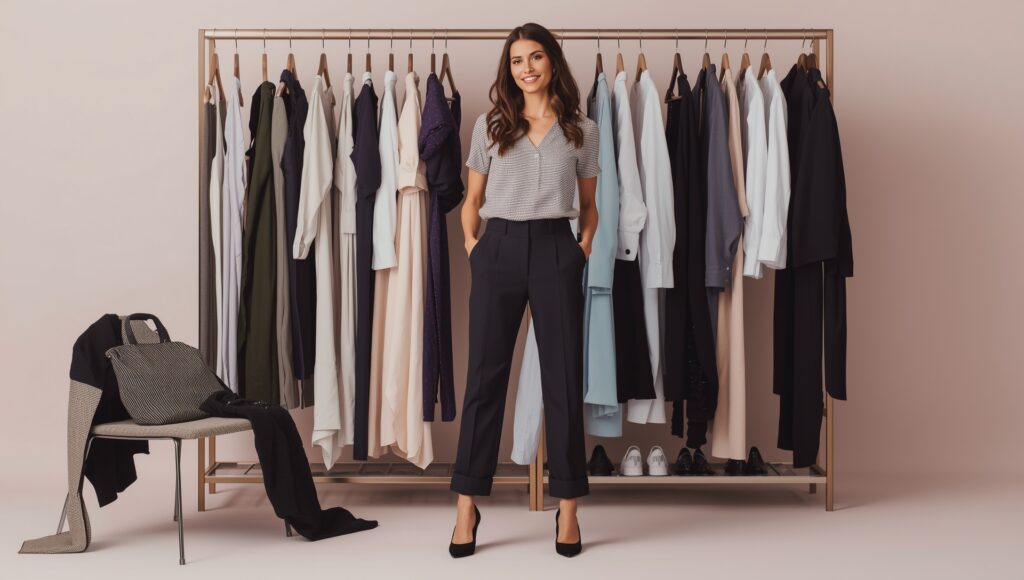
4. Essential Wardrobe Staples Every Petite Woman Needs
Building a minimalist wardrobe is all about choosing quality pieces that work hard for you. For petite women, the right staples can make getting dressed simple while making sure every outfit flatters your frame. You may have a lot of trendy items in your wardrobe, but you should focus on the timeless pieces of clothing that you can mix and match with other clothes.
Tailored bottoms: A pair of well-fitting jeans is a must. Slim or straight cuts usually work best, as they elongate the legs without adding bulk. Tailored trousers in a neutral color, like black or beige, are another versatile option — perfect for both work and casual settings.
Dresses with shape: Instead of shapeless, oversized dresses, choose styles with a defined waistline or wrap designs. These can enhance your looks. For petites, midi dresses that end just below the knee usually look more balanced than maxi dresses, which can occasionally appear overwhelming.
Fitted tops and blouses: Look for tops that sit well at the shoulders and don’t extend too far past the hips. Cropped or tucked-in styles create a balanced silhouette, helping your legs appear longer.
Outerwear that fits: A classic blazer or cropped jacket is a staple for petites. Longer coats can work too, but make sure they’re tailored to your height — otherwise, they can make you uncomfortable and easily overpower your frame.
Shoes that elongate: Nude heels, sleek ankle boots, or pointed flats all help create the illusion of longer legs. Avoid overly chunky shoes, which can make you look shorter.
With just a few versatile, well-chosen pieces, you can create dozens of outfits that look stylish, polished, and flattering — without the need for an overflowing closet.
Read About Capsule Wardrobe For Women Over 50
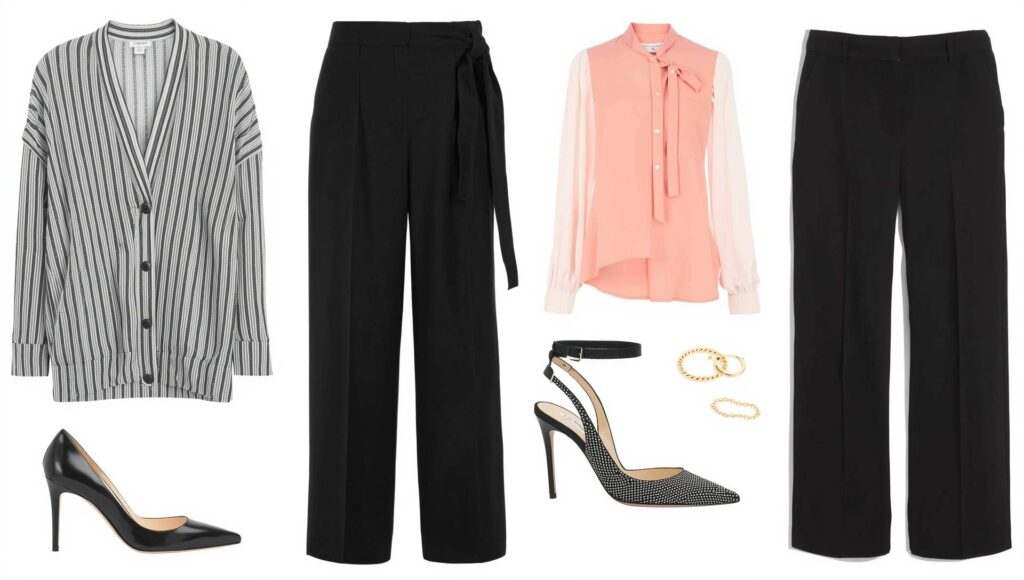
5. Styling Tips: What Works and What to Avoid for Petites
Once you have the right wardrobe staples, the next step is learning how to style them in ways that highlight your proportions. For petite women, small tweaks in styling can make a huge difference in how put-together and confident you feel.
What works well:
- High-waisted bottoms: These create the illusion of longer legs and make you look even better. Pair them with tucked-in tops or cropped blouses for the best effect.
- Vertical details: Think vertical stripes, long necklaces, or open cardigans. These draw the eye up and down, naturally elongating your body and outfit shape.
- Monochrome outfits: A monochrome outfit is a look made up of clothing in a single color or varying shades of the same color. Dressing in one color family makes you look taller and creates a clean, polished appearance.
- Defined waistlines: Belts, wrap dresses, or tops that cinch at the waist keep your shape from getting lost in fabric.
What to avoid:
- Oversized fits: While oversized fashion is trendy, it makes you look more petite or short-heighted. So if you want to wear oversized or baggy fits, you can, but don’t use more oversized, just buy balanced oversized clothes. Stick to tailored cuts or balance looser pieces with fitted ones. For example, if you wear a flowy top, pair it with slim trousers. It will enhance your look.
- Too many layers: Heavy layering can add bulk and shorten your body and outfit shape. Instead, go for lightweight layers that keep lines smooth.
- Chunky accessories: Large handbags, oversized jewelry, or very thick belts can overwhelm your frame. Always go for medium or small-scale accessories that complement your proportions instead of overwhelming you with too much jewelry.
- Ankle-cut pants that hit wrong: Cropped pants that stop mid-calf can make legs look shorter. Either go full length or choose crops that hit just above the ankle.
The key is balance. By highlighting length, keeping proportions clean, using lightweight essentials, and avoiding pieces that overpower, you can easily style outfits that make you look taller and more confident. These small adjustments ensure your minimalist wardrobe works smarter for your petite frame.
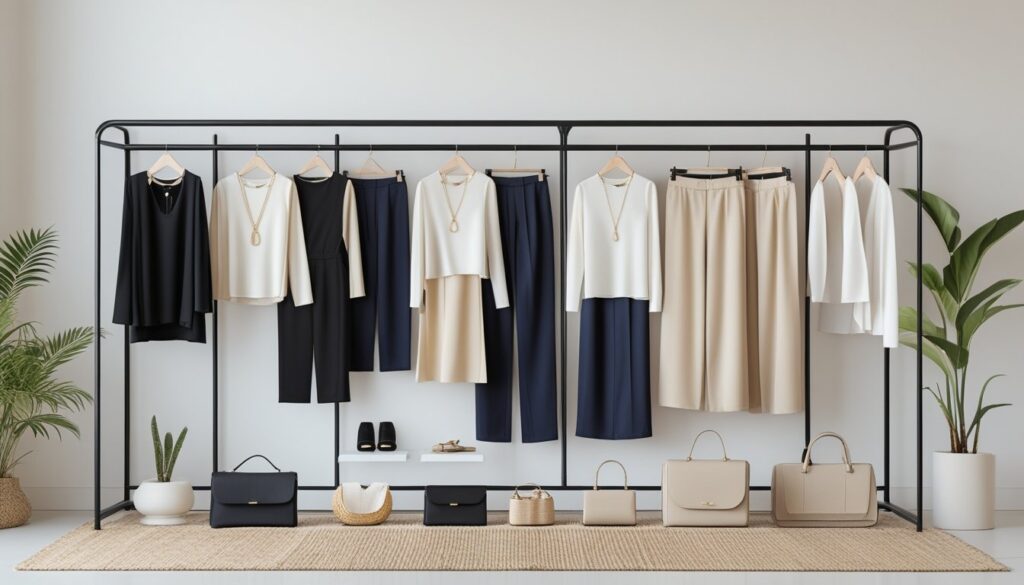
6. Mixing and Matching for Maximum Outfits
One of the biggest benefits of a minimalist wardrobe is how easy it becomes to mix and match. For petite women, this doesn’t just save space — it also makes styling faster and ensures every outfit feels intentional. With the right staples, you can create dozens of different looks without needing a closet full of clothes.
Start with a core color palette: Choose 3–4 base colors (like black, navy, beige, or white) and 1–2 accent colors (such as burgundy, olive, or blush). Keeping your palette consistent ensures everything works well together and makes it easier to create outfits without any hassle.
Pair basics in new ways: A fitted white blouse isn’t just for work — it can be tucked into high-waisted jeans for casual days or paired with tailored trousers and a blazer for meetings. Similarly, a neutral midi dress can be dressed down with sneakers or dressed up with heels and accessories.
Layer smartly: Petite women often look best in lighter layers rather than bulky ones. A cropped jacket over a fitted top and jeans creates a sharp, balanced look. Long cardigans worn open can also add length without adding weight.
Accessorize to switch the vibe: Even in a minimalist wardrobe, accessories can transform an outfit. A slim belt can define your waist in a dress, while a delicate necklace can add polish to a casual look. Stick with pieces that are proportional to your frame — smaller handbags, sleek shoes, and delicate & smaller jewelry.
By carefully choosing versatile staples and rethinking how you style them, you can stretch a small wardrobe into countless outfits. The key is consistency: when every piece works well with others, you’ll always have something that enhances your look and is stylish to wear without extra clutter and tension.

7. Shopping Smart: How to Buy Less but Better
A minimalist wardrobe isn’t about never shopping again — it’s about shopping smart and wisely. For petite women, this means choosing pieces that truly fit your frame, avoiding impulse buys, and investing in clothing that lasts. You should always be thoughtful about your purchases; you’ll save money, avoid clutter, and always have clothes you love wearing.
Focus on fit first: Clothes that don’t fit right will almost always sit at the back of your closet. Look for petite-specific sizing when possible, since these are designed with shorter proportions in mind. Brands like Petite Studio NYC specialize in creating timeless, high-quality pieces just for petites.
Quality over quantity: Instead of buying multiple trendy items that won’t last, invest in fewer, higher-quality staples. Natural fabrics like cotton, wool, or silk not only last longer but also look more polished. A great blazer or perfectly fitted jeans will serve you far better than five fast-fashion alternatives.
Avoid impulse shopping: A good rule is the “24-hour pause.” If you see something you like, wait a day before buying, and think carefully. Often, the urge fades, and you’ll only purchase pieces you truly need.
Buy with versatility in mind: Before purchasing, ask yourself: Can I wear this in at least three different ways with clothes I already own? If you are not able to mix and match, the answer is no, skip it.
By shopping intentionally, you’ll build a wardrobe that makes you feel and look confident, stylish, and practical. Every new piece will earn its place, and you’ll avoid the cycle of buying clothes that don’t work for you.

8. Maintaining Your Minimalist Wardrobe Over Time
Building a minimalist wardrobe is only the first step — the real magic happens when you maintain it over time. This means keeping your closet with some trend & timeless pieces, without extra and unnecessary clothes.
Do regular closet check-ins: Every few months, take a quick look at your wardrobe. Just check your wardrobe and see if you have items that you haven’t worn in a long time. If so, it’s high time to declutter. This simple habit keeps clutter from creeping back in and ensures every piece you own is truly serving you.
Care for your clothes: A minimalist wardrobe only works if your clothes last. Follow proper washing instructions, hang or fold garments neatly, and repair small issues (like loose buttons) before they turn into bigger problems. Investing in quality pieces pays off even more when you care for them properly.
Avoid falling back into fast fashion habits: I remember when I used to get caught up in every new trend that popped up. A new season would arrive, and suddenly my closet was full of pieces I barely wore more than once. For petites especially, this cycle can be tricky—fast fashion often overwhelms a smaller frame and leaves you with a wardrobe that feels mismatched.
What really made a difference for me was focusing on timeless, well-fitting staples—the kind of pieces that always look good, no matter what’s trending. And here’s the fun part: if you still enjoy experimenting with fashion (I definitely do), you don’t have to give that up. Instead of replacing your whole wardrobe, try weaving in trends through accessories—like a bold handbag, fun earrings, or a patterned scarf. That way, you get the excitement of new styles without losing the balance and harmony of your look.
Add slowly, not all at once: A minimalist wardrobe is meant to evolve with you. When your lifestyle or body changes, add new pieces thoughtfully instead of buying in bulk. This way, your closet stays curated and intentional.
When you look after your wardrobe and pick your clothes with a bit of thought, you’ll keep enjoying the comfort and confidence of dressing in a simple, stylish way that shows off your petite frame.
If you want to know more about minimalist wardrobe tips, click here.
Conclusion
As a petite woman, the power of a minimalist wardrobe lies in making every piece count. When your closet is filled with clothes that flatter your frame and match your lifestyle, you don’t need dozens of options—you need the right ones. Choosing timeless styles and pieces that fit well means your outfits will always feel put-together without the stress of sorting through clutter.
The most important thing you will notice is that wearing simple accessories like simple jewelry, simple bags, and thin waist belts, and fabrics with small floral prints, vertical lines patterns, all work best when you are a petite woman.
And the best reward? Freedom. Freedom from clutter, from blind shopping, and from outfits that don’t make you feel good. Instead, you’ll have clothes that give you confidence, comfort, and a sense of ease—every single day.
FAQs About Building a Minimalist Wardrobe for Petite Women
Q1. Do I need to get rid of all my clothes to start a minimalist wardrobe?
Not at all! You don’t have to throw everything out. Start with what you already own, pick out the pieces that fit well and make you feel confident, and slowly build from there. Minimalism is about keeping what works — not about starting from scratch.
Q2. Can a petite woman wear oversized clothes in a minimalist wardrobe?
Yes, but with balance. Oversized pieces can look chic, but too much volume can overwhelm a petite frame. Try pairing one loose item (like an oversized sweater) with something fitted (like slim jeans or tailored pants) so you keep proportion on your side.
Q3. How many pieces do you really need in a petite minimalist wardrobe?
There’s no magic number! Some women feel great with 25–30 pieces, while others are happy with 40 or more. The key is choosing pieces you actually wear and that can be mixed and matched easily.
Q4. Is it expensive to build a minimalist wardrobe for petites?
It doesn’t have to be. In fact, many women save money because they stop buying clothes that don’t fit or that they’ll never wear. Focus on quality basics, shop sales, and consider petite-specific brands that last longer. It’s about “less but better.”
Q5. What are the best colors for a petite minimalist wardrobe?
You should have neutral colors like black, navy, beige, and white. These colors you can easily mix and match with other colors. Petite women often look great in monochrome outfits (wearing one color head-to-toe) because it creates the illusion of height. You can always bring in a pop of color with your accessories, like shoes, bags, jewelry, etc
Q6. How do I keep my wardrobe minimalist over time?
The trick is regular check-ins. Every season, take a look at your closet and ask: Do I still wear this? Does it still fit my style? If not, let it go. Adding new pieces slowly and intentionally will keep your wardrobe minimalist and fresh.


